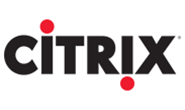
Instead, a bare-metal hypervisor embedded in the firmware will operate virtual machines running a standard corporate image delivered from the data centre.
The idea is to offer both mobile and office users the benefits of centralised client virtualisation, but keeping the advantages of local execution and a personalised PC environment.
One advantage of this architecture is that workers can be allowed a virtual machine for personal use that is completely isolated from the corporate environment, helping to prevent malware attacks, according to Intel and Citrix.
"The user gets the full experience of a modern laptop with great graphics and near-native virtualisation performance for different workloads," said Ian Pratt, vice president for advanced virtualisation products at Citrix.
Another advantage is that firms need fewer images, since the virtual clients are decoupled from the hardware of whichever desktop or laptop they run on.
The link back to the datacentre also promises better management control over laptops, which are often off-site and therefore miss critical updates pushed out by administrators.
"Virtual machines can be delivered over the network using an advanced synchronisation protocol to enable them to be rapidly deployed and efficiently updated," said Pratt.
"In the data centre, you build an image and sync it down to the clients over the network. When a desktop connects, it checks for updates.
"You can push the same image out to thousands of users, who can just pick up the deltas [differences]."
In the reverse direction, any changes to the virtual machine, such as user-created documents or emails, are synchronised back to the data centre to create a backup.
"If you lose your laptop, you can then synchronise your entire environment down to a replacement system," Pratt said.
IT administrators will also be able to apply policies controlling the behaviour of the virtual client, determining whether devices such as USB Flash drives plugged into the laptop can be accessed or not.
The initiative is still at an early stage, and the companies do not expect to deliver shipping products until at least the second half of this year. It is designed around Intel's vPro technology and Citrix's Xen hypervisor, and PC vendors Dell and HP are said to be supporting the project.
Greg Bryant, vice president of Intel's Business Client group, contrasted the approach with virtual desktop infrastructure, which centralises virtual clients onto servers in the data centre.
"This is a different kind of client virtualisation. It gives IT managers large-scale control from the datacentre, but does not compromise on mobility because it executes locally," he said.
VMware unveiled its own solution in December to support mobile with virtual clients. Offline Desktop, part of VMware View 3, lets the user 'check out' their virtual client onto a laptop.
However, Pratt said that this approach is flawed because the virtual client runs on top of another operating system that might be compromised.
"The hypervisor here provides no security against the host snooping information from the virtual machine or corrupting it," he said.
Gartner analyst Phil Dawson described the development as "great news", but warned that companies could find that any cost savings derived from easier management of the clients might be offset by the need to beef up servers in the data centre.
Dawson also said that Intel needs virtualisation to take off on clients to address the multi-core issue, because current PC software does not make effective use of the full potential power of multi-core chips.

_(20).jpg&h=140&w=231&c=1&s=0)






_(26).jpg&w=100&c=1&s=0)

 iTnews Executive Retreat - Security Leaders Edition
iTnews Executive Retreat - Security Leaders Edition












_(1).jpg&h=140&w=231&c=1&s=0)



